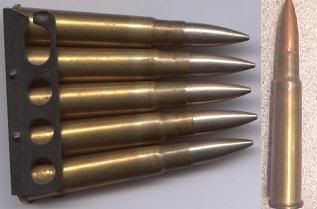.303 to be precise. I don't know nothing about bullets myself, but I'm hoping someone else does.
Looking at pictures they seem to have brass casings but the bullet itself comes in a variety of colours. For instance, sometimes they look like they are steel, and other times like they are made of something else, more of a copper colour. Sometimes they are painted, presumably indicating some special type of round like tracer or something.


Which way should I paint them to represent bog-standard ammo in the era of the Great War? It's ammunition for Martini-Enfields I'm doing, though that ought not to make any difference I wouldn't have thought, as they used the same ammo as the Lee-Enfield. Got some bandoliers to paint, see, and some of them are of the sort where part of the bullet is exposed.
Fank you.
